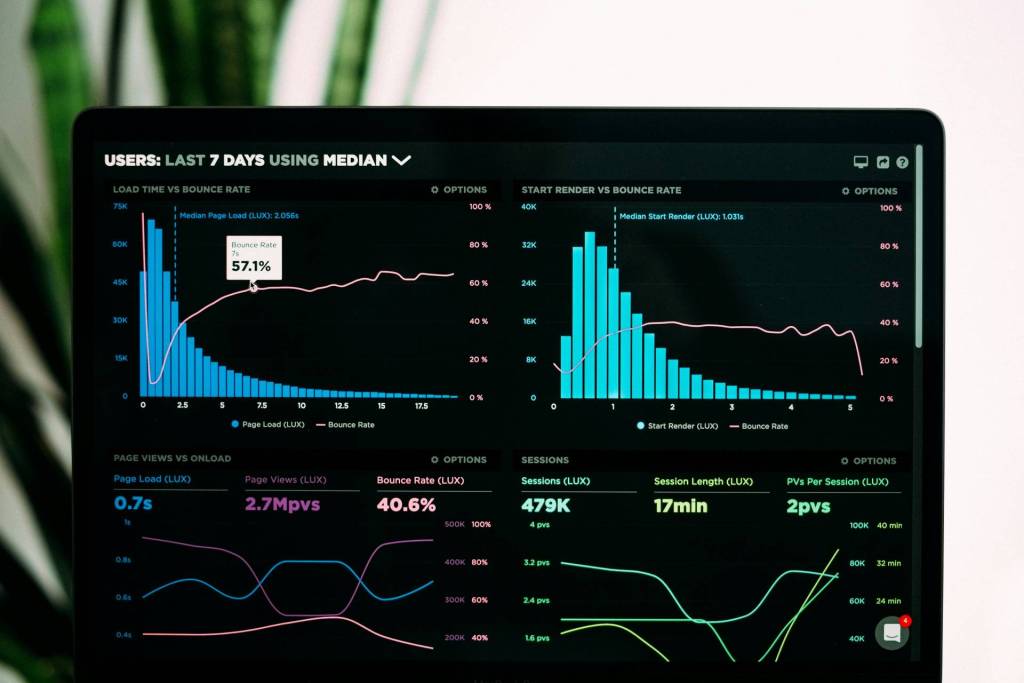B2B brand marketing is a powerful tool that helps businesses establish a unique identity in a competitive marketplace. It goes beyond just creating a logo or a catchy tagline—it’s about building a reputation that resonates with your target audience and positions your company as a trusted leader in your industry.
The Implication of B2B Brand Marketing
In the world of B2B (business-to-business) marketing, the concept of ‘brand’ extends far beyond a mere name or visual identity. It represents the collective impression and experience that customers, stakeholders, and employees associate with your company. This broader perspective is crucial because, in B2B scenarios, the stakes are often higher, the sales cycles longer, and the buying decisions more complex than in B2C (business-to-consumer) contexts.
More Than Aesthetics
While logos, color schemes, and design elements are visible markers of your brand, they merely scratch the surface of what branding means in B2B marketing. In this realm, a brand encompasses the promises you make and the values you stand for. It’s about the reliability, quality, and innovation that your products or services offer. Every touchpoint, from your website to customer service, reflects your brand’s essence and contributes to the overall perception of your company.
The Role of Brand in B2B Marketing
In B2B marketing, your brand serves as a critical differentiator. With products and services often appearing similar on the surface, your brand can provide the distinction needed to stand out in a crowded market. It’s what makes your business memorable and trustworthy in the eyes of decision-makers.
Moreover, a strong B2B brand facilitates easier recognition, builds business value, and fosters relationships. It transforms transactions into partnerships by embedding your offerings in a narrative that resonates with businesses and their specific needs. This is especially important in B2B markets, where purchasing decisions are frequently driven by logic, detailed analysis, and a clear understanding of ROI (Return on Investment).
Branding Beyond the Surface
Effective B2B branding goes beyond external perceptions; it’s also about internal identity. It shapes how your employees understand and advocate for the business, influencing company culture and employee engagement. A well-defined brand gives employees a sense of purpose and alignment, which is crucial for delivering consistent and compelling customer experiences.
The Value of B2B Branding
In today’s saturated market, having a well-established brand can greatly influence purchasing decisions. While product quality, price, and availability are all crucial factors, the impact of a strong brand can’t be underestimated. A strong brand can increase customer loyalty, enhance your company’s reputation, and even allow you to charge a premium for your products or services.
So, if your company is neglecting its brand, it could be missing out on these valuable benefits. Remember, your brand isn’t just about your products—it’s about the entire experience you provide to your customers.
Final Thoughts
In B2B brand marketing, the implication is clear: your brand is a pivotal element of your business strategy. It’s not just about how you look, but about how you act, how you’re perceived, and how you deliver value. A robust B2B brand can elevate your business, creating a competitive edge and establishing long-term loyalty among business customers. Remember, in the B2B world, your brand is not just what you say about yourself; it’s what your customers believe based on their experiences with your company.
Building a B2B Brand Strategy
Crafting a potent B2B brand strategy is essential for setting your business apart in the competitive market landscape. It’s not merely about having a compelling logo or an engaging tagline; it’s about establishing a deep connection with your business audience. A well-defined brand strategy acts as a guiding star for all your business decisions and communications.
Defining Your Brand Essence
The journey begins with introspection. Understanding the core value your company offers is crucial. This essence, or the fundamental principle behind your brand, should infiltrate every aspect of your business. It’s the heartbeat of your brand, guiding not just your marketing efforts but also your operational and service standards. Ask yourself, what does your brand stand for? Is it innovation, reliability, or perhaps unmatched customer service? Identifying this core value is the first step in building a solid brand foundation.
Identifying Your Target Audience
Understanding your target audience is pivotal. B2B branding is unique in that it often involves multiple stakeholders within a business. Conduct thorough research to understand the challenges, needs, and decision-making processes of your customers. This nuanced understanding will enable you to craft a brand message that not only resonates but also speaks directly to their business challenges and goals.
Creating a Unique Value Proposition
Your Unique Value Proposition (UVP) is the cornerstone of your brand communication. It articulates clearly why your solution is the best choice for your customers. What sets your offerings apart from the competition? How do you address the specific needs and pain points of your target audience better than anyone else? A compelling UVP is succinct, clear, and focused on the unique benefits that your company brings to the table.
Developing a Consistent Brand Message
Consistency is key in B2B branding. Every interaction with your brand, whether through your website, social media, customer service, or marketing materials, should reinforce your core brand message. This consistency builds trust and reinforces your brand’s value proposition in the minds of your customers. Ensure that all departments and teams within your organization understand and embody the brand message, providing a unified and consistent experience at every touchpoint.
Designing a Memorable Logo and Tagline
While not the sole elements of your brand, a distinctive logo and an impactful tagline are important components of your visual identity. They should encapsulate your brand essence and be easily recognizable. Invest in professional design and ensure that your logo and tagline are versatile enough to work across various mediums and contexts. They should act as a visual shorthand for your brand’s core values and promises.
Conclusion
Building a B2B brand strategy requires careful thought, a deep understanding of your market, and consistent application of your core values across all aspects of your business. It’s about crafting a story that resonates with your business customers, meets their specific needs, and sets you apart from the competition. By focusing on these foundational elements, you can create a strong, enduring brand that stands the test of time and fosters lasting business relationships.
The Impact of Strong B2B Branding
The power of strong B2B branding cannot be underestimated. In the business-to-business market, where decisions are heavily researched and highly analytical, the emotional and psychological weight of a brand plays a crucial role. A robust B2B brand extends beyond mere transactions to foster trust, loyalty, and a deep-seated sense of value, significantly influencing your company’s market position and growth potential.
Attracting and Retaining Customers
A strong brand serves as a beacon, attracting potential clients. It communicates stability, reliability, and excellence, making your company a preferred choice for businesses seeking solutions. In markets where products and services are complex and investments are significant, a well-regarded brand can be the deciding factor in the buying process. Furthermore, once customers are onboard, a strong brand can foster loyalty, encouraging long-term relationships over one-time transactions. This loyalty not only aids in retaining customers but also transforms them into brand advocates who amplify your market reach through word-of-mouth.
Differentiation from Competitors
In the B2B realm, where many products and services can appear similar, a strong brand can be your distinct advantage. It differentiates your offerings in a crowded marketplace, highlighting your unique value proposition and the distinct benefits of partnering with your company. This differentiation is not just about standing out visually but also about embodying unique business values, innovative solutions, and superior service that resonates with your target audience.
Commanding a Price Premium
One of the most tangible impacts of strong B2B branding is the ability to command a price premium. When your brand is associated with quality, reliability, and industry leadership, clients are more willing to pay higher prices. This is because they are not just paying for a product or service; they are investing in a brand that they trust and see value in. Strong branding means that price becomes a secondary concern to value, allowing you greater flexibility in pricing strategies and enhancing your profitability.
Enhancing Customer Loyalty
The strength of your brand directly influences customer loyalty. In B2B markets, where switching suppliers can be costly and time-consuming, a trusted brand creates a significant barrier to exit. Customers who have built a relationship with your brand and have had positive experiences are less inclined to risk moving to a competitor. This loyalty not only secures ongoing business but also reduces the cost of sales, as maintaining existing customers is generally less expensive than acquiring new ones.
Measuring the Value of Your B2B Brand
Understanding and measuring the value of your B2B brand is crucial for evaluating its impact on your business’s success and guiding strategic decisions. While intangible elements make quantification challenging, several indicators can provide a comprehensive view of your brand’s value and its influence on your business outcomes.
Assessing Price Premiums
One of the clearest indicators of brand value is the price premium your customers are willing to pay compared to competitors’ offerings. This premium reflects the additional value customers perceive in your brand, which can encompass factors like product quality, service excellence, and the overall brand experience. To evaluate this, compare your pricing structures with those of similar products or services in the market. A consistent ability to charge more while maintaining or growing market share is a strong testament to the value your brand commands.
Evaluating Customer Loyalty
Customer loyalty is a powerful measure of brand value, particularly in the B2B sector, where relationships and repeat business are pivotal. Loyal customers not only provide a stable revenue stream but also reduce costs associated with client acquisition and marketing. Measure loyalty through repeat purchase rates, contract renewals, and the percentage of business from returning customers. Additionally, customer referrals and advocacy, such as testimonials or case studies, can be tangible proof of the loyalty your brand inspires.
Analyzing Market Share and Growth
Another dimension of brand value is your market share and growth trajectory. A growing market share in a competitive landscape suggests that your brand is gaining preference and visibility. Analyzing trends in your market share over time can reveal how your brand is performing relative to competitors and market conditions.
Leveraging Brand Equity Metrics
Brand equity, the value added by your brand to your products or services, can be assessed through various metrics such as brand awareness, brand reputation, and perceived quality. Surveys, market research, and social media analysis can provide insights into how your brand is perceived in the market. Higher brand equity translates to greater customer preference and loyalty, contributing directly to your brand’s overall value.
Monitoring Customer Feedback and Engagement
Customer feedback, whether through surveys, reviews, or direct communication, offers invaluable insights into your brand’s value. High levels of positive engagement, satisfaction scores, and willingness to recommend are indicators of a strong brand. Conversely, negative feedback can identify areas for improvement, helping to preserve and enhance brand value over time.
Conclusion
Measuring the value of your B2B brand involves a combination of financial metrics, customer behavior analysis, and market positioning assessments. While no single measure can capture the entire value of a brand, together, these metrics provide a comprehensive picture of your brand’s strength and influence. Regularly monitoring these indicators will help you understand the impact of your branding efforts, make informed strategic decisions, and ultimately drive sustained business growth. In the dynamic landscape of B2B marketing, a robust, well-valued brand is an indispensable asset for long-term success.
Leveraging Your B2B Brand for Competitive Advantage
In the B2B sector, where products and services can often appear similar on the surface, your brand can be the defining factor that sets your company apart. A well-crafted and strategically managed brand can become your most potent competitive advantage. Here’s how you can leverage your B2B brand to stand out and sustain your market position:
1. Clarify Your Brand Positioning
Your brand should clearly articulate what makes your company unique and why customers should choose you over competitors. This involves a deep understanding of your unique value proposition, core values, and the distinct benefits you provide. By sharpening your brand positioning, you make it easier for potential clients to understand and remember what you stand for, significantly impacting their buying decisions.
2. Consistency is Key
Consistency reinforces your brand identity and helps build trust with your customers. Ensure that all your communications and experiences — from marketing materials and sales presentations to customer service and product delivery — consistently reflect your brand values and messaging. This consistency should be maintained across all channels and touchpoints, creating a cohesive and predictable experience that reinforces customer trust and loyalty.
3. Deliver on Your Brand Promise
Your brand is a promise to your customers. It sets expectations for what they will receive when they choose your services or products. Ensuring that your company lives up to this brand promise at every interaction is crucial. Failure to do so can damage your reputation and erode trust. However, consistently meeting or exceeding expectations solidifies your brand’s credibility and can turn satisfied customers into vocal advocates.
4. Engage and Build Relationships
In B2B marketing, relationships are everything. Use your brand to forge meaningful connections with your target audience. This can involve content marketing that addresses their needs and challenges, engagement through social media, or personalized customer service. By fostering strong relationships, your brand becomes more than just a supplier — it becomes a trusted partner.
5. Innovate and Update
The business world is constantly evolving, and so should your brand. Regularly assess and update your brand to keep it relevant and aligned with your market’s current needs and future trends. This doesn’t mean changing your core brand identity, but rather ensuring that your brand remains dynamic and forward-looking. Innovation in your products, services, and customer experience can reinforce your brand’s relevance and leadership in the industry.
6. Leverage Customer Feedback
Customer feedback is a goldmine of insights. It can inform you how your brand is perceived and where there are opportunities for improvement or differentiation. Use this feedback to refine your brand strategy and offerings, ensuring they meet your customers’ evolving needs and preferences.
The Future of B2B Brand Marketing
In an increasingly digital world, B2B brand marketing is more important than ever. As businesses continue to navigate the digital landscape, having a strong brand can be the key to standing out in a crowded marketplace.
The future of B2B brand marketing is about more than just creating a unique logo or catchy tagline—it’s about building a reputation that resonates with your target audience and positions your company as a trusted leader in your industry.
In conclusion, B2B brand marketing is a powerful tool that can help your business stand out, attract and retain customers, and ultimately drive growth. By understanding what your company stands for, creating a consistent brand message, and measuring the value of your brand, you can leverage your brand for a competitive advantage in today’s digital landscape.
FAQs: B2B Branding and Marketing
What is branding in B2B marketing?
Branding in B2B marketing involves creating a distinctive identity and value proposition for a business that sells products or services to other businesses. This includes developing a brand message, visual identity, and positioning that differentiate the company in the marketplace, emphasizing trust, expertise, and industry leadership.
What is B2B marketing with an example?
B2B marketing refers to the strategies and practices used by companies that sell products or services to other businesses, rather than to individual consumers. For example, a company that manufactures industrial machinery and sells it to construction companies is engaged in B2B marketing.
What are the 4 types of B2B?
The four main types of B2B are:
- Producers: Businesses that purchase goods or raw materials to create their products.
- Resellers: Companies that buy products to resell them to others without changing their form.
- Governments: Government entities that purchase goods and services for public projects.
- Institutions: Non-profit organizations, charities, and schools that buy goods and services for their operations.
How do I create a B2B brand?
To create a B2B brand:
- Understand Your Market: Research your target audience and competitors.
- Define Your Brand: Establish your unique value proposition and brand personality.
- Develop Brand Elements: Create a consistent visual and verbal identity.
- Communicate Consistently: Use your brand messaging across all marketing materials and channels.
- Build Relationships: Engage with your customers and partners to build trust and loyalty.
What is the biggest B2B example?
One of the biggest B2B examples is Alibaba, the Chinese multinational conglomerate that provides sales services via web portals for businesses, offering a wide range of products and services for various business entities.
What are the three main types of B2B sales?
The three main types of B2B sales are:
- Supply Sales: Selling raw materials or parts that will be used in the production process.
- Wholesale and Distribution Sales: Selling products in bulk, typically to resellers.
- Service Sales: Providing services to other businesses, such as consulting, maintenance, or software solutions.
What makes a strong B2B brand?
A strong B2B brand is characterized by:
- Clear and consistent messaging that reflects the company’s values and mission.
- A strong value proposition that resonates with the target audience.
- High-quality products or services that meet customer needs.
- Trustworthiness and reliability, building long-term relationships with customers.
- A professional and distinctive visual identity.
What makes a great B2B brand?
A great B2B brand not only fulfills the criteria of a strong brand but also:
- Leads with insights and thought leadership within its industry.
- Maintains a customer-centric approach, tailoring solutions to meet client needs.
- Innovates continually, staying ahead of industry trends and challenges.
- Cultivates an excellent reputation through customer service and engagement.
How do I start B2B marketing from scratch?
To start B2B marketing from scratch:
- Market Research: Understand your industry, competitors, and target market.
- Define Your Strategy: Set clear goals and define your marketing strategy.
- Build Your Brand: Develop your branding and messaging.
- Choose Your Channels: Select the most effective marketing channels for your audience.
- Create Content: Develop valuable content tailored to your target customers.
- Launch Campaigns: Implement and manage marketing campaigns.
- Measure and Optimize: Analyze performance and optimize your strategies for better results.
Featured Image Credit: Photo by Slidebean; Unsplash – Thank you!
















